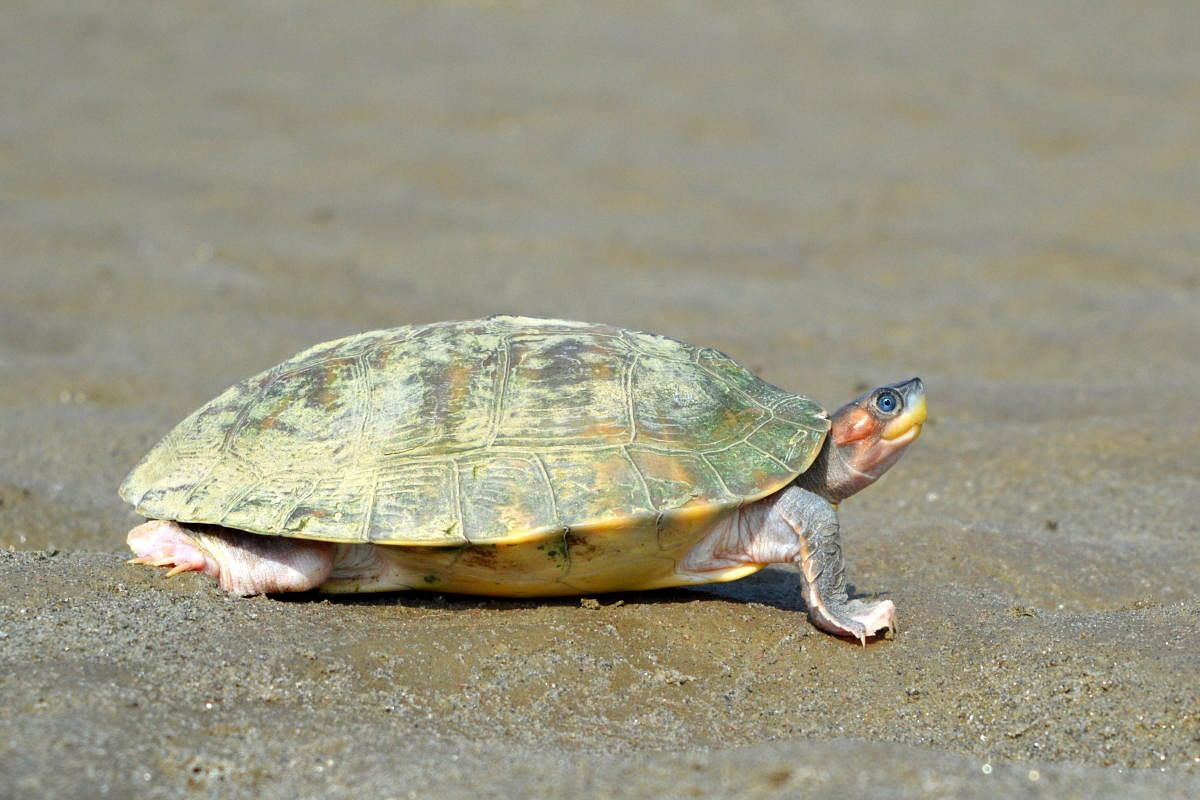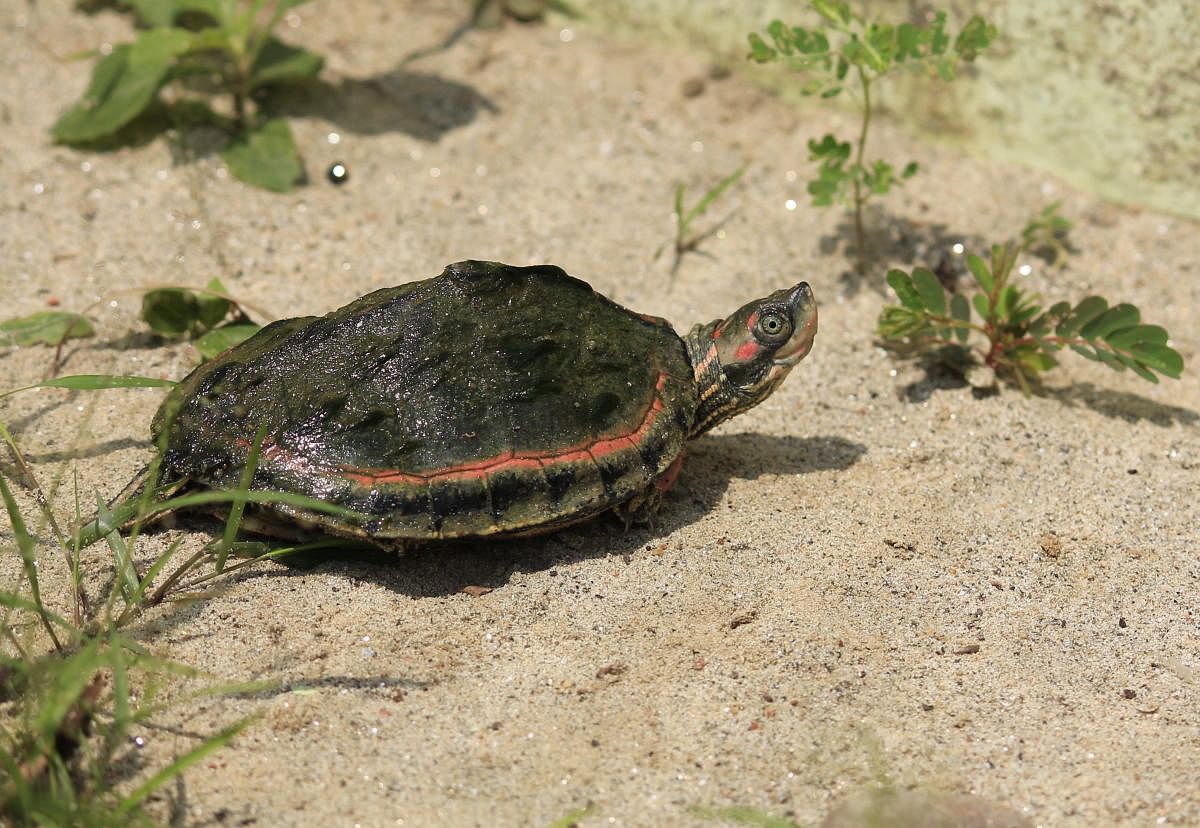

For over 200-odd million years, tortoises and turtles have survived the numerous challenges posed by nature. So much so that these reptiles lived on and even passed their genes to the next generation when nature decided to wipe out the mighty dinosaurs from the earth around 65 million years ago.
However, these ‘cute’ vertebrates are finding it difficult to survive since the last 50 to 100 years when humans started drastically devouring the natural resources on earth. According to a scientific paper published in Bioscience in 2018 by Jeffrey E Lovich and others, in the last few years alone, we have lost or put at risk nearly 61% of the total 356 known species of turtles and tortoises.
Scientists and environmentalists fear that there is every possibility that an animal as old as the dinosaurs will become extinct within no time if conservation steps are not taken immediately. “We are already seeing many species of tortoises and turtles getting endangered which is not a good sign,” says Sneha Dharwadkar, an independent turtle researcher, and co-founder of the Freshwater Turtles and Tortoises of India (FTTI) group on the India Biodiversity Portal website, which had organised Turtle Spotting Week campaign in May.
Vital role
As per researchers, turtles and tortoises play a vital role in the food web of the ecology. While they are prey for some predators, in some other cases they are the predators. They can be found everywhere, from sea to desert and thick deciduous forest to a small lake or well.
Their habitat ranges in all sorts of conditions and their presence indicates the health of that ecosystem. Some species are important for seed dispersal while some species maintain the ecosystem balance by scavenging the dead and decaying matter from the rivers and wetland habitats.
Presently, India has 28 species of freshwater turtles and tortoises of which 17 have been listed in the ‘threatened’ category by the International Union for Conservation of Nature and Natural Resources (IUCN). A majority of these freshwater species of tortoises and turtles are found in north and north-east India.
Natural evolution over the years has helped these turtles and tortoises to survive any challenge of nature. However, it is human-made challenges that are threatening the existence of this pre-dinosaur era animal.
Humans are not just destroying their habitat for various ‘development’ works but are over-exploiting them for consumption as food and in preparation of medicines. The illegal trade of these ‘cute chelonian’ as pet, disease and climate change are also some of the threats to their survival.
Sneha says that turtles contribute to the health of desert, wetland, freshwater and marine ecosystems, and any decline in its population will have an adverse impact on other species, including humans, which may not be immediately apparent.
“As turtles and tortoises are defenceless against predators like humans, these reptiles become easy prey for them,” said Anuja Mital, an independent turtle researcher who has done extensive study on ecological roles of turtles. She was also a part of the ‘Namami Gange’ project, studying the diversity of turtles in River Ganga. The Ganges softshell turtle, known as vultures of the river, are expected to naturally cleanse Ganga of its biomasses.
“Presence of more species of turtles in the river ecology indicates the health of the river. Turtles are natural cleaners of the river. Being herbivores, omnivores and carnivores, they consume all kinds of food. But for these animals to perform their ‘ecological duty’ properly, we have to provide them with their natural habitat,” says Anuja, adding that expecting them to clean all human-made mess while there is still the presence of adversaries is wrong.
She also adds that releasing them into rivers and lakes will not give the desired results if water bodies have gone beyond repair.
Therefore, she stresses on the need for extensive studies of these freshwater tortoises and turtles to understand their role in river ecology.
Exploitation as pets
If degradation of habitat is one of the challenges that these turtles are facing, there is a thriving industry of illegal trade of turtles. Many countries illegally import tortoises for both consumption and medicinal purposes.
In 2016-17 alone, various departments of government have succeeded in rescuing more than 30,000 turtles and tortoises from illegally being traded out of the country.
“The craze of keeping these tortoises and turtles as pets is also having an adverse effect on their survival,” says Sneha. She adds that while it is illegal to keep indigenous tortoises and turtles as pets in India, there is no prohibition on having exotic tortoises as pets.
But most of the times, people do not understand the food habits and behaviour of these imported animals and end up leaving them in nearby water bodies if they are unable to care for them. While their intentions are good, these turtles often become invasive species and end up destroying the indigenous species and the habitat, she explained.
For the sake of better understanding and research, both Sneha and Anuja have come up with the FTTI group on the India Biodiversity Portal, where they have been requesting people to share the pictures and details of tortoises and turtles.
As photographs are powerful documentation tools, along with the sighting location and date, we can understand the distribution patterns of different species across the country.
Through the Turtle Spotting Week campaign, they have recorded over 50 observations, and hope to continue this as an annual event.